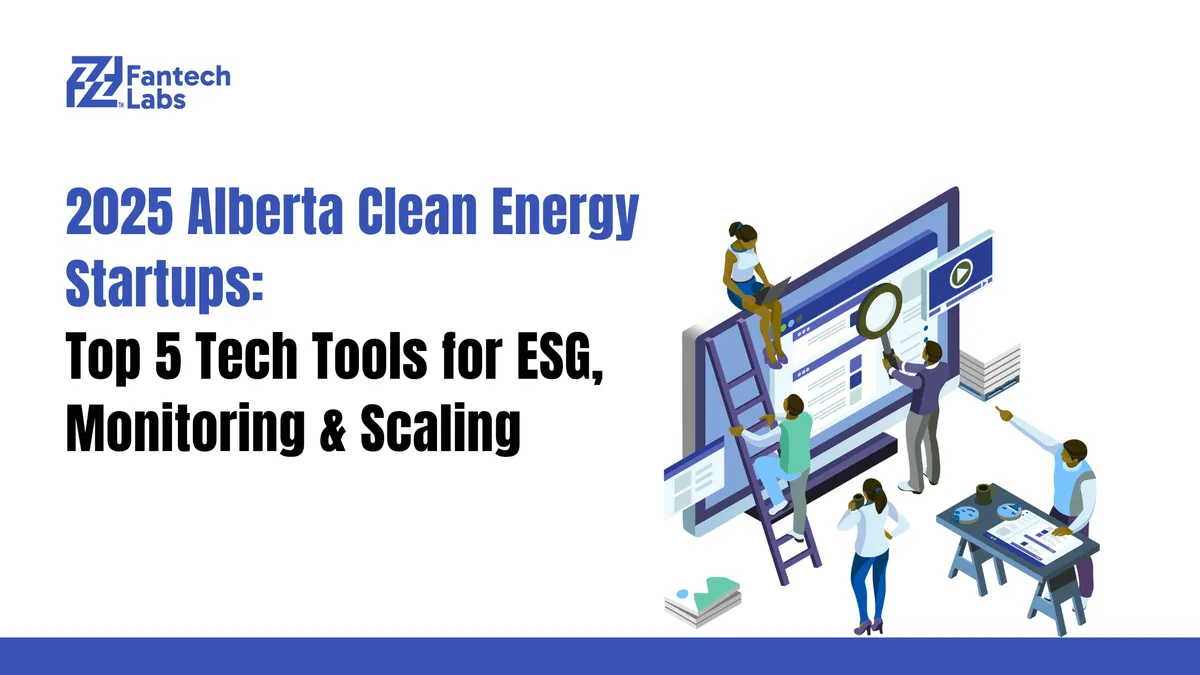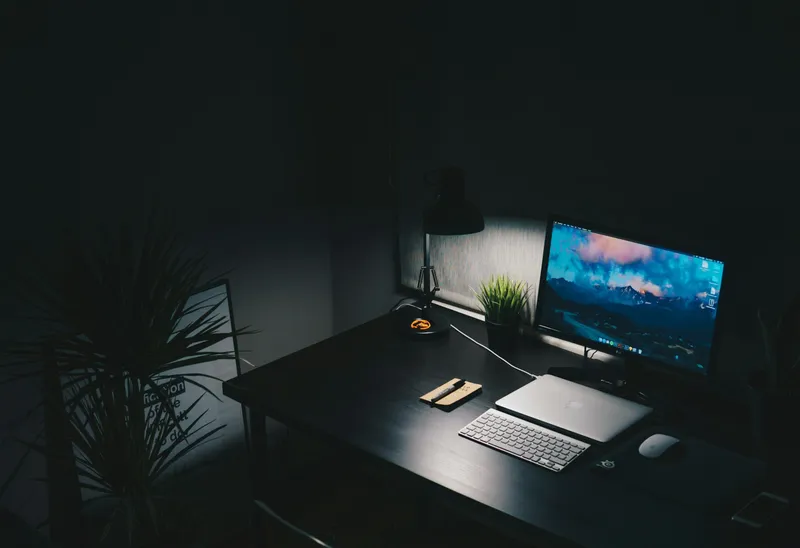Top 5 Tech Tools for Alberta Clean Energy Startups (2025 Update)
Discover 5 tech tools for Alberta clean energy startups: energy management, IoT monitoring, and project management solutions from digital solutions experts who implement them.

Updated July 2025
Working at a digital solutions company, we see a lot of clean energy startups make the same mistakes. They come to us after they've already spent months trying to manage operations manually, or worse - using the wrong software that wasn't built for Alberta's conditions.
Just last month, a solar company reached out to us. Their monitoring system crashed during a cold snap, and they had no idea which panels were working. They'd been flying blind for three days before realizing they needed proper tech infrastructure.
After helping dozens of Alberta cleantech companies over the past few years, here are the tools that actually solve problems instead of creating new ones.

1- EnergyCAP - The One Tool Every Client Eventually Needs
I used to think energy management software was all the same until we started implementing EnergyCAP for Alberta clients. The difference is how it handles our province's weird electricity market.
EnergyCAP's real-time pricing integration showed them exactly when to shift their grid usage. Saved them about $12,000 in the first quarter alone.
What we like about implementing EnergyCAP:
- The API integration is straightforward (rare in energy software)
- It understands Alberta's deregulated market
- Carbon tracking that makes sense to investors
- Works reliably in extreme weather (we've tested it at -38°C)
The setup usually takes us 2-3 weeks, depending on how messy their existing data is. Most clients see ROI within 6 months just from better energy purchasing decisions.

2- GridPoint - IoT That Doesn't Break Every Winter
Here's what we learned the hard way: most IoT sensors die their first Alberta winter. GridPoint is different. We've installed their hardware at wind farms, solar installations, and they keep working when everything else fails.
Last winter, one of our clients got an alert about bearing wear in a wind turbine. The predictive maintenance caught a problem that would've cost $60,000 to fix later. That one alert paid for the entire GridPoint system.
Why we recommend GridPoint to Alberta clients:
- Hardware actually survives -40°C (we've tested it)
- Remote diagnostics work with spotty rural internet
- The maintenance alerts aren't false alarms
- Integration with other energy management tools is clean
Downside: the upfront cost scares some startups. But for clients with real assets to protect, we push hard for GridPoint because we know it works.

3- Project Management - Asana and ClickUp for Remote Alberta Teams
Managing clean energy projects across Alberta means dealing with teams scattered. We've implemented both Asana and ClickUp for different clients, and the choice depends on what they're actually doing.
Asana works better for traditional project management. When we're tracking solar installations or wind farm construction, the Gantt charts help coordinate everything. One client used Asana to manage installations across 12 locations - kept everything on schedule despite weather delays.
ClickUp makes sense for tech-heavy operations. We set it up for a Calgary company building its energy trading platform. Sprint planning allowed them to better synchronise software development with physical operations.
Example: we assisted a cleantech startup in using ClickUp to oversee the installation of solar panels and the creation of specialised apps. Both aspects of their firm benefited greatly from the agile model.

4- Custom Development with MuleSoft - When Standard Tools Hit Limits
Most of our clean energy clients start asking about custom development when they realize off-the-shelf tools can't handle Alberta's complexity. We've created custom MuleSoft solutions for clients who need to interact with multiple utility systems.
In one project, the client's ERP system, Epcor's data streams, ATCO's systems, and IoT sensors were all connected. No standard tool could handle that integration mess. With MuleSoft's platform, we were able to create APIs that smoothly integrated everything.
When we suggest custom development:
- Integrations of many utilities (common in Alberta)
- Specific operations that ordinary tools cannot handle
- Processing large amounts of data from IoT networks
- Personalised reporting to meet the needs of particular investors
Reality check: custom development starts around $80,000 for anything useful. We only recommend it when the operational benefits clearly justify the cost.

5- Persefoni - ESG Reporting That Works
ESG reporting used to be a nightmare for our clients. Export data from five different systems and hope you didn't screw up the calculations. Persefoni changed that completely.
We implemented Persefoni for a solar company that was spending 2 days every month on carbon reporting. Now it's automated - the platform pulls data from their energy management systems and creates investor-ready reports.
Why we suggest Persefoni for Alberta clients:
- Understands Canadian carbon reporting standards
- Integrates with the energy management tools we typically implement
- Automated reporting saves massive amounts of time
- Output format matches what investors actually want to see
The time savings alone usually justify the subscription cost. Plus, clean ESG data helps with funding.
How These Tools Work Together for Alberta Startups
Alberta clean energy has unique challenges that generic business software wasn't designed for:
Extreme weather: Monitoring systems need to work at -40°C and during heat waves. Most don't. GridPoint does.
Remote operations: Remote monitoring is essential when your wind farm is 200 km from the nearest civilisation. It is a matter of survival.
Grid complexity: Most energy software overlooks the pricing patterns created by Alberta's unregulated power market.
Regulations: There are particular formats for provincial emissions reporting. These details are typically overlooked by standard tools.
These tools exchange data as part of the integrated solutions we build. EnergyCAP receives sensor data from GridPoint for thorough monitoring. Asana coordinates the teams, managing everything. Persefoni pulls from all sources for automated ESG reporting.

Real Results from Our Calgary Client
This isn't theoretical - we implemented this full stack for a Calgary solar startup over 18 months.
This is what truly took place:
- 30% less time was spent on equipment due to early GridPoint problem detection.
- 12% reduction in operating costs due to improved energy procurement through EnergyCAP
- Project completion times increased by 20% as a result of enhanced Asana cooperation.
- ESG compliance is now 95% automated after being a manual nightmare.
- About $200,000 in manual reporting expenses were eliminated.
Our Implementation Approach
We don't give our clients everything at once. This is the exact order that works:
- Project management (Asana or ClickUp) should come first. Before adding complexity, resolve operational coordination.
- Add energy management, or EnergyCAP. Once projects are planned, you need to understand energy costs and usage.
- When physical assets need to be protected, install GridPoint IoT monitoring.
- Custom programming should only be considered after standard integrations have reached their limits (MuleSoft).
- Use ESG reporting when funds or rules demand it (Persefoni).
This staged approach lays the foundation for each next phase while avoiding overburdening customers.
What We're Seeing in Alberta's Market
The financial landscape shifted in 2025. Canada's Clean Technology Innovation Fund now prioritises startups with strong digital infrastructure. Our clients with proper carbon tracking and IoT monitoring get better access to funding.
Alberta's also implementing new grid connection requirements for real-time emissions reporting. We're helping clients prepare for these requirements before they become mandatory.
The smart startups are investing in tech infrastructure early, before regulatory pressure forces rushed implementations.
Bottom Line for Our Clean Energy Clients
Alberta's clean energy sector is getting more competitive, but most startups are still using manual processes that don't scale. The right tech infrastructure creates real competitive advantages.
We recommend these tools because we've seen them work in real Alberta conditions - extreme weather, remote locations, complex regulatory requirements. They're not just demo-friendly; they solve actual operational problems.
If you're running a clean energy startup in Alberta, start building proper tech infrastructure before operational problems force your hand. The cost of implementing good systems early is always lower than fixing problems later.
Need help figuring out what makes sense for your specific situation? That's exactly what we do - build digital solutions that work in Alberta's real-world conditions, not just in sales presentations.
FAQs
Which tools help with ESG requirements for Alberta startups?
We typically recommend EnergyCAP for energy tracking, GridPoint for equipment monitoring, and Persefoni for automated reporting. This combination handles most investor and regulatory requirements.
Can Alberta cleantech startups get funding for tech infrastructure?
Yes, but the application process matters. We help clients document their digital monitoring capabilities because the Clean Technology Innovation Fund prioritizes startups with strong tech infrastructure.
When do you recommend custom software over standard tools?
Only when necessary. Alberta's grid complexity sometimes requires custom integrations, especially for multi-utility connections or unique IoT data processing. But we start with standard tools first.
Do these tools meet Canadian ESG reporting standards?
Persefoni is built for North American regulations, and EnergyCAP handles energy reporting correctly. The key is proper data integration - we make sure everything connects cleanly so the output meets regulatory requirements.
About the Author
Written by Aneeqa Hafeez, Lead Integration Specialist at Fantech Labs
As the Lead Integration Specialist at Fantech Labs, [Your Name] focuses on designing and implementing robust tech infrastructures for companies in Alberta's demanding energy sector. She has hands-on experience deploying solutions like EnergyCAP, GridPoint, and MuleSoft to solve complex operational challenges, from real-time grid monitoring to automated ESG reporting in Canadian regulatory environments.
Connect with her on LinkedIn.
